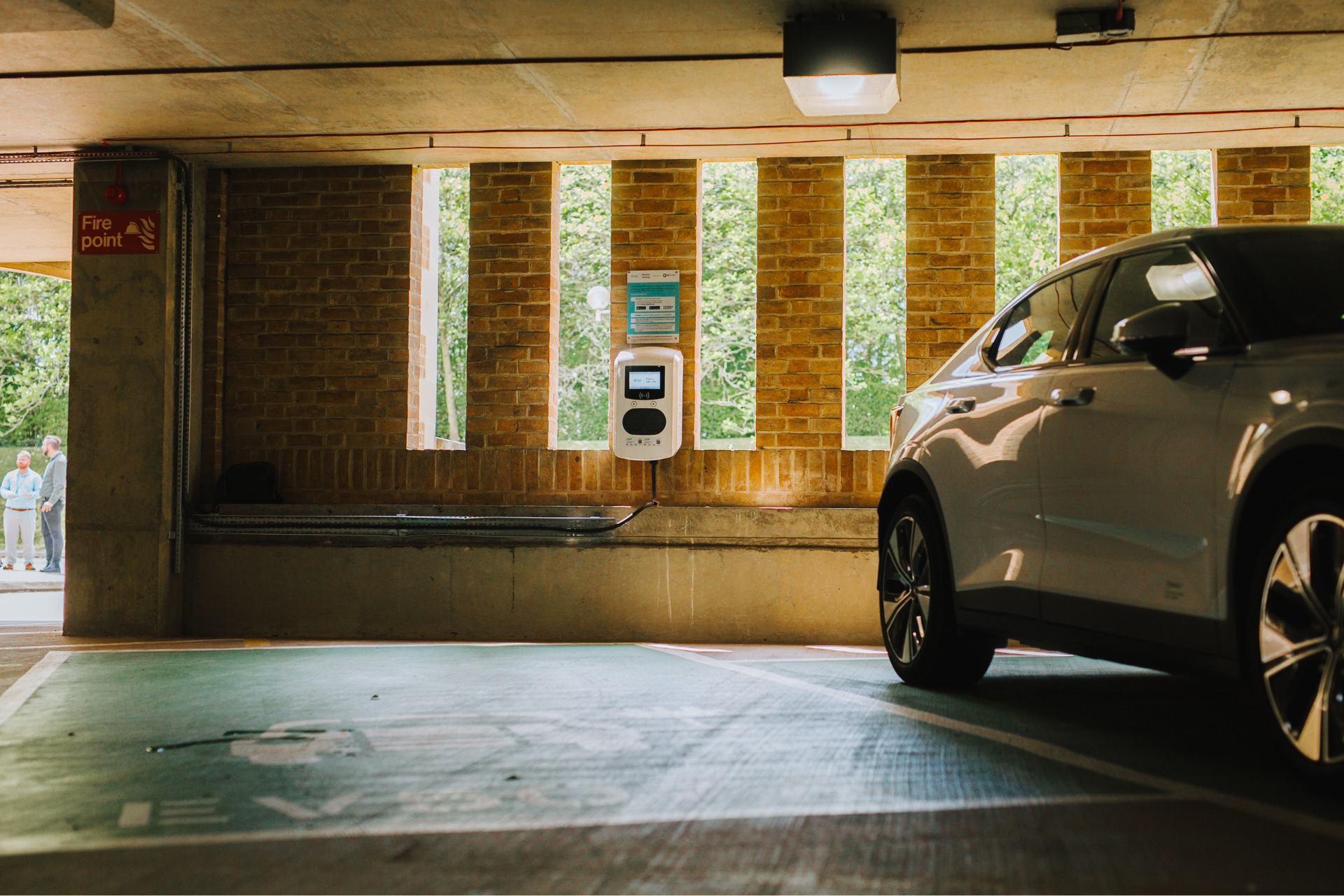Why investing in EV infrastructure is good for your company’s bottom line
With the cost of fuel rising, the savings associated with an electrified fleet have become even more apparent. Fuel prices have grown at an even quicker rate than electricity prices, with petrol drivers saving £779 and diesel drivers £738 a year on fuel by going electric. If your fleet has at least a dozen petrol vehicles, that figure increases further, saving over £9k per year.
Additionally, company cars are subject to a tax rate from the government of only 1% this year which will rise to 2% in 2023 until 2025. The decision isn’t just environmentally sensible but financially too.

The benefits of adding EV infrastructure to your business
Where does the need to own infrastructure come into play? Put simply, the adoption of EVs in the UK far exceeds the installation of charge points.
The Society of Motor Manufacturers and Traders (SMMT) revealed that for every four EVs purchased, only one public charge point was installed. This shortfall means your day-to-day activities could be impeded if you’re not looking towards your own infrastructure and route planning.
When planning your EV infrastructure needs it’s always best to use a five-to-ten-year view of your requirements instead of what’s immediately needed. This way you can future proof your investment by ensuring that when the need to expand arises, you’ve already factored this into your groundworks and cost. You may only need a few now, but it’s better to do the groundworks upfront to cut down on disruption and cost later.
As a rule of thumb: the quicker the charger, the more expensive it is, but these costs continue to drop as all new technology does. If your company operates on a local scale, you’re unlikely to need rapid chargers with the average range of an EV being around 200 miles. Additionally, with the right route planning you’ll be able to take advantage of the public charging network.
The employee benefits of EV infrastructure
The lower taxation rate of EVs will allow more businesses to offer EVs as company cars. Currently, drivers are challenged with installing a charge point at their home which might not work due to cost implications or because they live in an apartment or a house where off-road charging isn’t possible.
Meanwhile, public charge point prices have risen by up to 25% since the start of 2022, with VAT making up 20% of the cost. The same charge at home would be charged at five percent for VAT.
Having EV charging infrastructure on-site gives your employees access to charging that is exempt from tax. This gives your employees the benefit of not being laden with unnecessary costs that would be passed onto the business.
In short, investing in your EV infrastructure is an upfront cost that can save your company money throughout the lifetime of the vehicles. The ‘fuel’ costs are 75% cheaper than an ICE vehicle, while road tax and congestion charges are eliminated.
Having charge points at work provides the ability to reduce the level of expenses claimed and grant you far more freedom when allocating your drivers to their routes.
Next steps
Switching to an electric fleet’s just the beginning of your sustainability journey, and there’s never been a better time to get started. Find out how Drax can help you take the first step towards a greener fleet.
Find out more about Drax Electric VehiclesDisclaimer
We’ve used all reasonable efforts to ensure that the content in this article is accurate, current, and complete at the date of publication. However, we make no express or implied representations or warranties regarding its accuracy, currency or completeness. We cannot accept any responsibility (to the extent permitted by law) for any loss arising directly or indirectly from the use of any content in this article, or any action taken in relying upon it.


